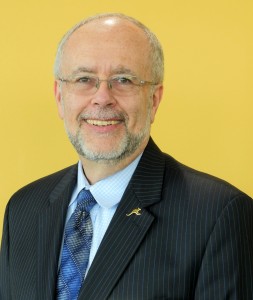A major concern over the past few years for Colleges and Universities has been the intense recruitment competition for a dwindling number of undergraduate students. For those who are unaware, the pool size of college-aged students for undergraduate degrees has decreased dramatically. The financial health of universities and colleges often depends on student enrollment. While novel approaches in recruitment, recruitment of under-represented groups, and course delivery have helped to maintain some stability of enrollment, there could be a demographic that has been ignored or minimized on this issue.
A recent article in the Washington Post and a newsletter put out by the Council of Graduate Schools, reveals that the greatest pool of potential students is for those who wish to pursue a master’s degree. Doctoral degrees in most cases are not a generator of revenue as they cost more than what they bring in from a revenue perspective. However, Ph.D. students add to the research infrastructure, a critical mission of an institution such as UMKC.
The number of master’s degree graduates has been increasing steadily and in some cases dramatically for 20 years. There has been a 63% increase in students pursing a master’s degree from 2000 to 2012. This increase is 18% greater than the output for Bachelor’s degrees. Forty-two percent of freshmen say they plan to pursue a master’s degree. Long thought to be relegated to a less prestigious credential, the master’s degree in some fields is fast becoming the entry level degree, and/or often garners greater income for the graduate. Some Universities such as Georgetown and Johns Hopkins enroll and award more master’s degrees than Bachelor degrees. The interest in emphasizing enrollment in master’s programs should not be driven by the revenue needs of a university, but by the benefits it can produce for the graduates. Greater earning power is one reason for this surge and another is the opportunity to retrain or to sharpen the tool box for future promotions and growth opportunities. At UMKC, the number of master’s students has increased dramatically, including the 5 year BS/MS combined program. According to Dean Truman, students in engineering may select this route as starting salaries with a master’s degree are on the average of $10,000 per year higher compared to a Bachelor’s degree. This new wave of students will likely require faculty adjust how they teach, making their courses available at convenient times attractive to part-time working students, more on-line courses, and hybrid approaches to teaching.
Another development has been the introduction of a greater type of professional master’s degrees. Colleges of business were the first to embrace this type of degree with the master’s of Business Administration. Colleges of Education are large producers of master’s professional degree programs. Today there are a growing number of such degrees. The Council of Graduate Schools has promoted a new master’s degree referred to as the Professional Science Master’s (PSM) degree. This degree has the core subject matter courses, but includes courses often sought after by business and government such as management, communication and technical writing. The degree culminates with a field experience at a firm or government agency so the students get real world experience. Growing areas for professional type master’s degrees involve fields such as biotechnology, bioinformatics and applied statistics, and geographic information systems. Many traditional master’s programs can be tweaked to offer some other culminating experience in lieu of a traditional thesis. Degrees in History are no exception to changes in training with some attention directed at internship experiences in museums as an example.
The message is clear: urban higher education institutions are in a prime spot to develop and increase the student size and diversity of master’s degrees. The University of Missouri-Kansas City, having almost 4,000 graduate students, is positioned to further invest in such master’s programs that are novel and linked with industry and government sectors. Such programs have advisory boards from industry and government to help assist in advising what real world experience they need as well as providing paths for internships or a capstone experience. UMKC Graduate Faculty should look around and inventory their master’s degree programs and study employment trends and other venues for employment growth.

